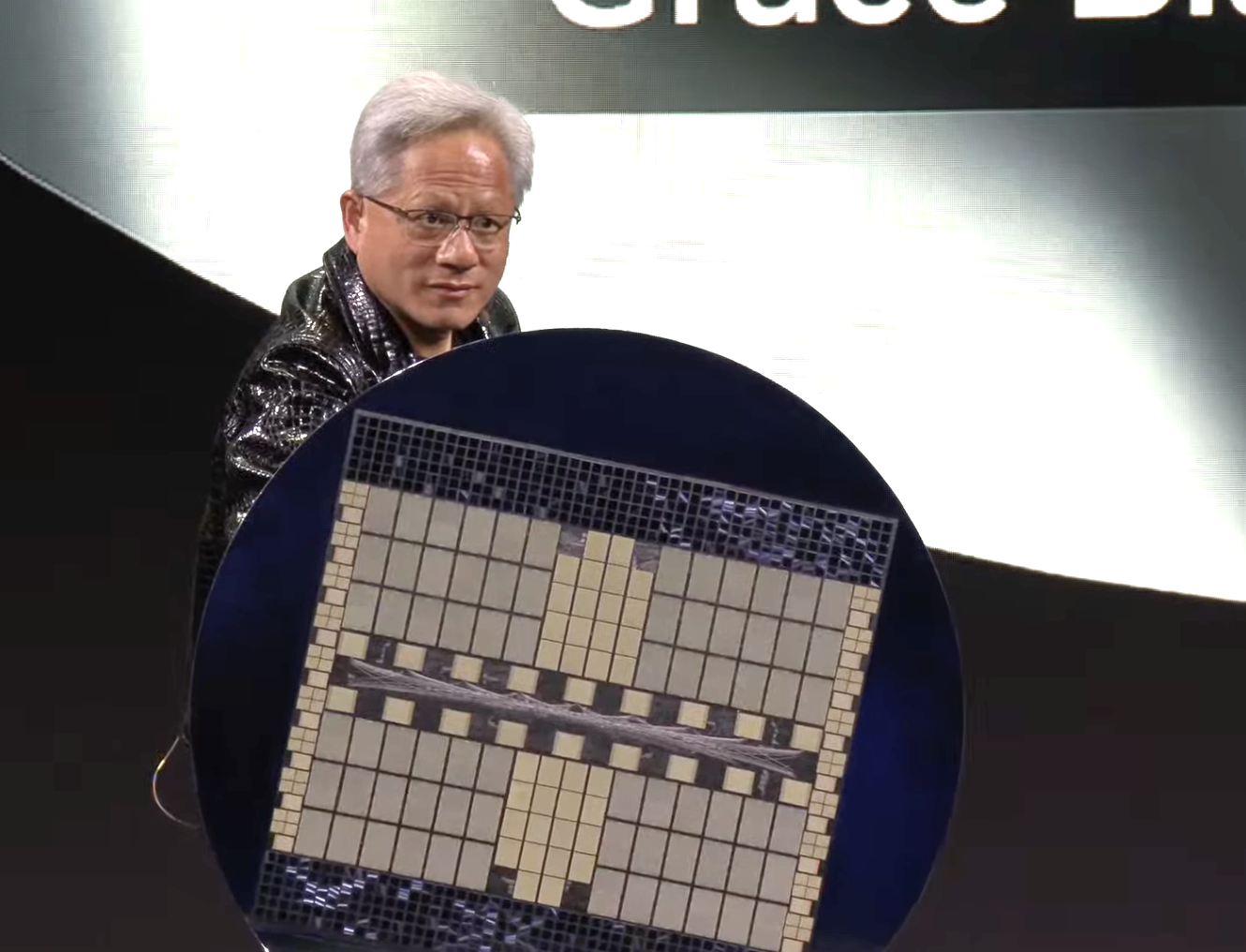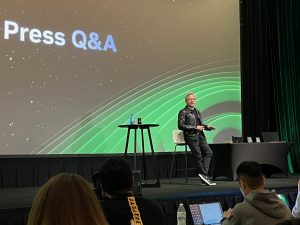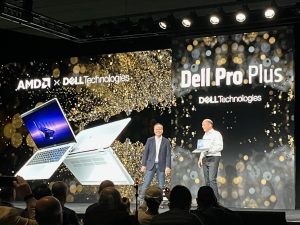 INFRA
INFRA
 INFRA
INFRA
 INFRA
INFRA
With more than 4,500 exhibiting companies and an expected 150,000 people gathered in Las Vegas this week for the CES consumer electronics show, it can be a supreme challenge to make news that will stand out amid the noise. Yet with artificial intelligence dominating the tech industry, including the consumer product world, Nvidia Corp. managed to do exactly that.
The chipmaker’s announcement on Monday of a palm-sized AI supercomputer that can sit on a desk and new AI development tools for autonomous vehicles and robots captures two key trends as 2025 gets underway. Silicon will have a major say in AI’s future direction and this will have a significant impact in how computing is performed at the edge.
For Nvidia, the consumer tech show offered an opportunity to showcase its expanding influence in the enterprise world. It’s a role defined by the company’s nearly unique position of strength in the accelerated computing market.

Nvidia CEO Jensen Huang met with the press during CES in Las Vegas on Tuesday.
“We only work on things that other people are not or that we can do singularly better,” Nvidia co-founder and Chief Executive Jensen Huang (pictured) said during a question-and-answer session with the media on Tuesday. “That’s why we are not in that many businesses. We are not market-share takers, we are market makers.”
A prime example of how Nvidia will press its advantage can be seen in Monday’s announcement of Project DIGITS, a desktop computer system powered by the GB10 Blackwell superchip. The supercomputer includes a petaflop of AI performance and 120 gigabytes of coherent, unified memory, and it will allow developers, researchers and data scientists to work with models of up to 200 billion parameters. In Nvidia’s world, AI processing will not be merely the province of large hyperscalers.
“We’re going to create AI in the cloud and run it on your PC,” Huang told the media. “Who else can say that?”
Dell Technologies Inc. also made AI PC-related announcements this week. The company unveiled a partnership with chipmaker Advanced Micro Devices Inc. on Monday that included Ryzen Pro AI processors in its AI PC lineup. The Ryzen processor’s built-in central, graphics and neural processing units are designed to strengthen AI development in edge PC environments.

Jack Huynh (left) of AMD and Sam Burd of Dell made a joint announcement on the AI PC at CES in Las Vegas.
“We’ve learned in building the Dell AI Factory that one size does not fit all,” Sam Burd, president of the Client Solutions Group at Dell, said during an AMD press conference at CES on Monday. “We see the same need in the AI PC area. The world’s greatest productivity device, the PC, is poised to play a significant role in the AI revolution.”
The rise of the AI PC is just one element in the rolling impact of artificial intelligence. This year’s CES provided additional evidence that AI is beginning to become more fully integrated in a host of devices at the edge.
AI’s growing influence is becoming more apparent in a number of eyebrow-raising consumer tech areas. AI-enabled dog collars, spice dispensers, bird feeders and even cat litter receptacles were on display at various venues in Las Vegas this week.
Though these use cases may not change the course of history, they are part of AI’s evolution from software that helps write college term papers to models that can accelerate robotics and the field of autonomous vehicles. “It’s teaching the AI to understand the physical world,” Huang explained in his Monday evening keynote, during his description of Nvidia Cosmos, a platform of physical AI models launched this week.
Indeed, major consumer tech providers such as LG Electronics Inc. are focused on creating deeply personalized experiences using technology in the home and car. The company’s press conference on Monday showcased reliance on AI technology to monitor power usage, instruct a washing machine to provide wrinkle-free clothes, coordinate family schedules and order a favorite coffee for pickup while driving to work.
“We are physically integrating AI into physical spaces around us,” William Cho, LG’s president and CEO, said during his press conference presentation.
While major tech firms tend to dominate the news cycle at CES, the event also provides an opportunity for smaller companies to showcase technology that could become more significant in the future.
One such example can be seen in the Netherlands-based firm Innatera Nanosystems B.V. which is developing a new breed of intelligent microprocessors that infuse sensors with brainlike thinking. The company’s Spiking Neural Processor T1 enables pattern recognition of images and spoken words in edge devices with submilliwatt power and submillisecond latency.
The technology can be used in smoke detectors, for example, to identify the number of people in a room and ensure compliance with fire safety regulations. Innatera closed an oversubscribed $21 million funding round last year and plans to move into large-scale production during the first half of 2025.
“We position ourselves as a company developing solutions for the sensor edge,” Chief Executive Sumeet Kumar said in an exclusive interview with SiliconANGLE. “There are not a lot of solutions which can take powerful AI capabilities into that space next to the sensor.”
Innovation from companies such as Innatera and this week’s announcements from major industry players such as Nvidia, AMD and Dell have spotlighted a key message from CES this year. AI adoption has propelled hardware to the front of the technology conversation again as silicon takes a prominent role in driving intelligent processing at the edge.
“The cloud brought us to a point where we thought hardware was just a commodity,” Bill Briggs, chief technology officer at Deloitte LLP, said during a CES session on Tuesday. “We’re at this interesting point where hardware matters again.”
THANK YOU